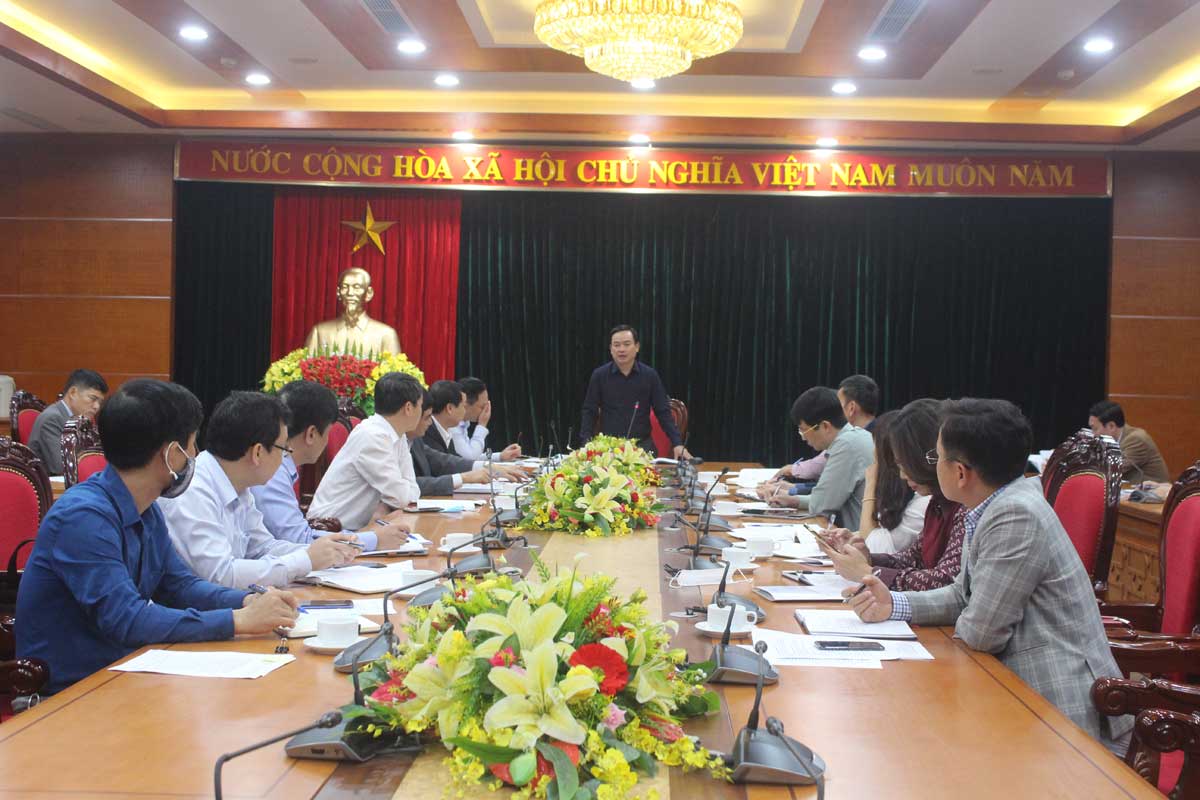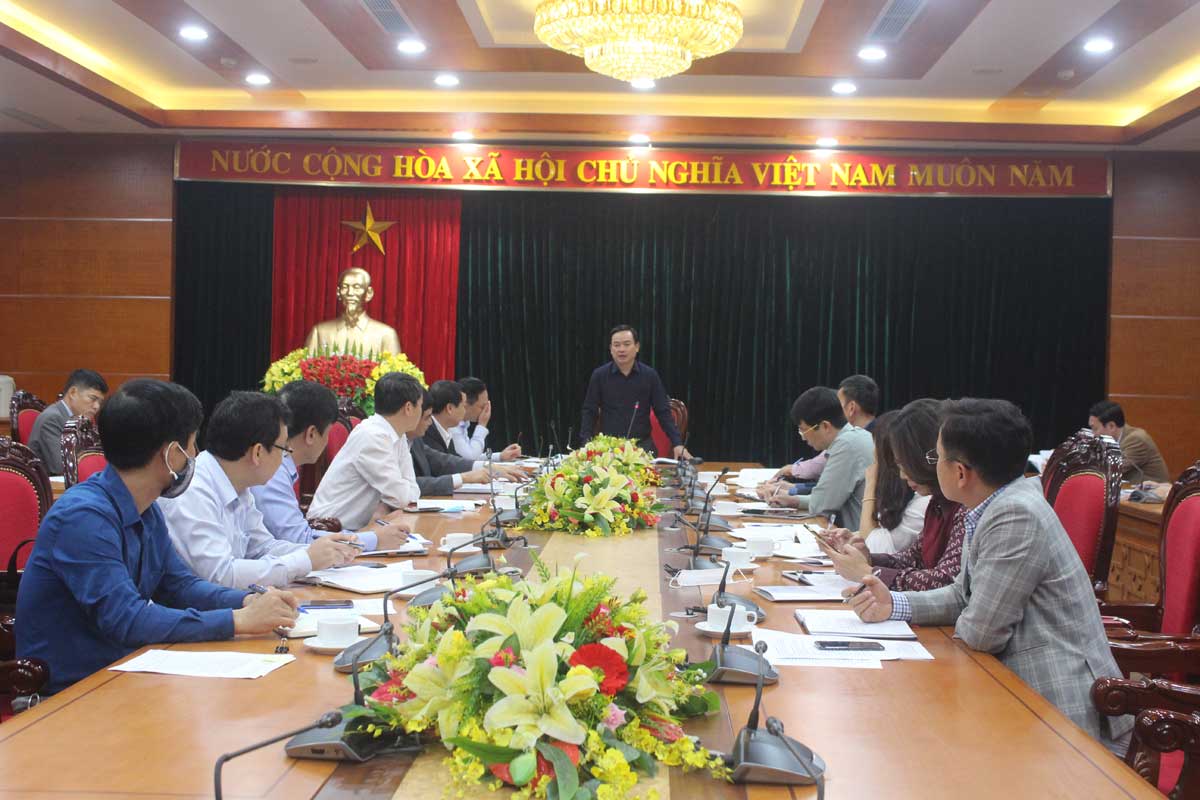
(HBO) – The provincial People’s Committee held a working session on February 24 to assess the compensation work, site clearance and the implementation of transport projects invested by the local Department of Transport and the management board of transport projects.
Quach Tat Liem, Vice Chairman of the
provincial People’s Committee, speaks at the working session
Many transport projects are under construction
in Hoa Binh province, connecting regions and industrial parks. They, therefore,
have played a significant role in spurring local socio-economic development,
and attracting investments in the province.
They include the Hoa Lac-Hoa Binh road, Hoa Binh
2 bridge, the road linking National Highway 6 and Chi Lang street in Hoa Binh
city, projects upgrading provincial roads 435, 433, 438B, and 431, and the road
running from Lac Son to Tan Lac districts.
Besides, the Department of Transport and the
management board of transport projects are about pour investments in other
major projects like the second phase of the Hoa Lac-Hoa Binh road, the road
from Tran Hung Dao to Dan Chu street and National Highway 6, the Quang
Tien-Thinh Minh road in Hoa Binh city, the road from National Highway 6 to
National Highway 12B through Doc Lap and Du Sang communes, and the one linking
Luong Son and Xuan Mai towns.
However, investors and the provincial People’s
Committee reported that the implementation of certain projects has been
hindered by obstacles in land clearance, resettlement and mountainous terrain.
Some others face difficulties in investment
capital, mechanisms, policies and compensation, and have not received the
support of local residents.
In his remarks, Liem said transport makes up 70
percent of projects in Hoa Binh province, and urged the sector to take more
drastic actions in this regard.
Pointing out a large number of pending projects,
mainly due to planning, the official said due attention should be paid to the
planning work and reports on those projects need to be sent to local
authorities as soon as possible.
He also urged the sector to better the road and
waterway planning work, especially the planning of seaports.
Hoa Binh has more than 20 projects included the
mid-term investment plan for 2021-2026, Liem said, adding that investors should
promptly complete relevant procedures before May 31 in order to allocate the
investment capital in a timely manner.
He also suggested the management board of
transport projects consider building coordination mechanisms and set schedules
for each project.
Meanwhile, the local transport sector was asked
to provide consultations regarding the implementation of transport projects in
line with the PM’s instructions./.
Hoa Binh province is undergoing a dynamic transformation amid Vietnam’s national digital transition. Building on Poliburo’s Resolution No. 57-NQ/TW on breakthroughs in science, technology, innovation, and national digital transformation, the province has rolled out a wide range of practical action plans. A standout initiative is the "Digital Literacy for All” movement, an effort to ensure that no one is left behind in the digital era.
Hoa Binh province is undergoing a dynamic transformation in the wake of the national digital transformation movement. Building on Resolution No. 57-NQ/TW of the Politburo on breakthroughs in science, technology, innovation, and national digital transformation, the province has implemented a wide range of practical action plans. A standout initiative is the "Digital Literacy for All” movement ambitious effort to ensure that no one is left behind in the digital age.
With a spirit of unity and proactive problem-solving, the Party Committee, the government and the people of Dong Lai Commune (Tan Lac District) have made great strides in implementing the resolutions of the 24th Party Congress of the commune for the 2020 - 2025 term. Focusing on leadership and practical actions, the commune has brought the Party’s resolutions into daily life, creating strong impacts and pushing the local development forward.
Amid the nationwide push for digital transformation, young people in Hoa Binh Province are stepping up as dynamic pioneers, applying technology to enhance Youth Union operations and expand the reach of youth-led initiatives. Through creativity and adaptability, Youth Union organizations at all levels have introduced a series of practical solutions, contributing to modern governance and community development.
In recent years, An Nghia commune, located in Lac Son district, has stepped up administrative reform, focusing on improving the quality and efficiency of its single-window service unit for receiving and processing administrative procedures. These improvements have helped create favourable conditions for local residents and organisations to handle administrative procedures, contributing to the commune’s broader socio-economic development.
The Prime Minister-approved master plan to develop the multi-use value of forests ecosystems through 2030, with a vision to 2050, aims to improve the management and sustainable use of forest resources, create jobs, increase incomes, and improve the living standards of ethnic minorities, people in mountainous and remote areas, forest workers and those living near forests.



